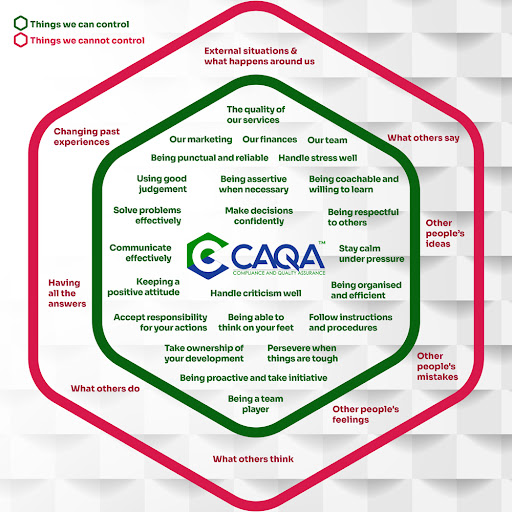The COVID-19 pandemic has been a game-changer for the ed-tech industry. The sector has seen a dramatic increase in demand for its products and services as schools and universities move to online learning models.
However, the pandemic has also created challenges for ed-tech start-ups, who are facing pressure to scale up their operations quickly and efficiently. In this article, we’ll share some strategies that ed-tech start-ups can use to sustain their businesses post-pandemic.
Review your value proposition
The first step is to review your value proposition and make sure it is still relevant in the current climate. What problem are you solving for your customers? How does your product or service meet their needs?
If you find that your offering is no longer as valuable as it once was, now is the time to pivot and focus on a new area.
Focus on online delivery
If you haven’t already, now is the time to focus on delivering your product or service online. With schools and universities moving to online learning, there is a growing demand for digital resources.
Make sure your website is optimised for search engine ranking so that potential customers can easily find you. And consider investing in online marketing to promote your business.
Keep your pricing model affordable
It’s important to keep your pricing model affordable for students and families who are struggling financially due to the pandemic. Many people are facing job losses and pay cuts, so it’s important to be understanding and flexible with your prices.
Create a supportive community
Finally, focus on creating a positive and supportive community for your students. Many people are feeling isolated and anxious at the moment, so it’s important to offer a safe and welcoming space for them to connect with others.
You can do this by offering online forums, social media groups, or even just one-on-one support. By creating a supportive community, you’ll not only help your students during these difficult times, but you’ll also build loyalty and goodwill that will benefit your business in the long run.
Diversify your product offerings
One of the best ways to sustain your ed-tech business post-pandemic is to diversify your product offerings. This will help you tap into new markets and revenue streams and make your business more resilient to economic downturns.
For example, you could develop new products that cater to the needs of distance learners or create online versions of your existing products and services.
Expand your marketing efforts
Another key strategy for sustaining your ed-tech business post-pandemic is to expand your marketing efforts. This will help you reach new customers and market segments and raise awareness of your brand.
There are a number of ways you can expand your marketing efforts, such as:
- Investing in digital marketing: This could involve creating a strong social media presence, developing targeted online advertising campaigns, and optimizing your website for search engines.
- Forming partnerships: You could partner with other ed-tech businesses or with organizations that share your target market. This will help you reach a wider audience and generate new leads.
- Hosting online events: You could host webinars, podcasts, or other online events to promote your business and engage with your target market.
Invest in research and development
Investing in research and development (R&D) is another key strategy for sustaining your ed-tech business post-pandemic. This will help you create new and innovative products and services, giving you a competitive edge in the marketplace.
There are several ways you can invest in R&D, such as
- Hiring R&D staff: You could hire specialist R&D staff, or contract research teams to work on specific projects.
- Partnering with universities: You could form partnerships with universities or other research institutions to gain access to their facilities and expertise.
- Investing in new technologies: You could invest in new technologies, such as artificial intelligence (AI) and virtual reality (VR), to create innovative products and services.
Focus on customer retention
Another important strategy for sustaining your ed-tech business post-pandemic is to focus on customer retention. This means keeping your existing customers happy and engaged so that they continue to use your products and services.
There are several ways you can focus on customer retention, such as
- Offering discounts and loyalty programs: You could offer discounts or loyalty programs to encourage customers to keep using your products and services.
- Providing excellent customer service: You should aim to provide a high level of customer service so that customers have a positive experience with your brand.
- Gathering feedback: You should regularly gather feedback from customers so that you can identify areas where you need to improve.
Personalisation
One of the key advantages of ed-tech solutions is that they can be personalised to the needs of each individual student. This is difficult to achieve in a traditional classroom setting. As such, ed-tech startups should look to capitalise on this advantage by offering personalised solutions that cater to the unique needs of each student.
Creating an Educational Experience that You couldn’t get in a Classroom
Another way that ed-tech startups can sustain their business post-pandemic is by creating an educational experience that you couldn’t get in a traditional classroom setting. This could involve utilising technology to create interactive and engaging learning experiences or providing access to content that is not typically available in a classroom setting.
Design Content in Bite Sizes
One of the challenges that many educational institutions face is that they often need to provide students with large amounts of content all at once. This can be overwhelming for students and make it difficult for them to retain the information. Ed-tech startups can solve this problem by designing content in bite-sized pieces that are easy for students to digest and understand.
Focus on the Future
It’s important for ed-tech startups to remember that the pandemic will eventually come to an end. When this happens, there will be a return to some sense of normalcy. As such, it’s important for ed-tech startups to focus on the future and not get too caught up in the present. By focusing on the future, ed-tech startups will be in a better position to sustain their business post-pandemic.
Think Outside the Box
Finally, it’s important for ed-tech startups to think outside the box when it comes to sustaining their business post-pandemic. There are many opportunities for ed-tech startups to grow their business and tap into new markets. However, it’s important to remember that not all of these opportunities will be obvious. As such, it’s important to think outside the box and identify opportunities that may not be immediately apparent.
Build a strong team
Finally, it’s important to build a strong team if you want to sustain your ed-tech business post-pandemic. This means hiring the right employees and providing them with the training and support they need to be successful.
It’s also important to create a positive and motivating work environment so that employees are engaged and motivated to do their best work.
Following these strategies will help you sustain your ed-tech business post-pandemic, and position you for success in the future.
The COVID-19 pandemic has been a period of significant opportunity for ed-tech startups. However, as we start to see a return to some sense of normalcy, it is important for ed-tech startups to think about how they can sustain their momentum and continue to grow their business. In this article, we have explored some strategies that ed-tech startups can use to sustain their business post-pandemic.
Do you have any other suggestions? Let us know in the comments below!













